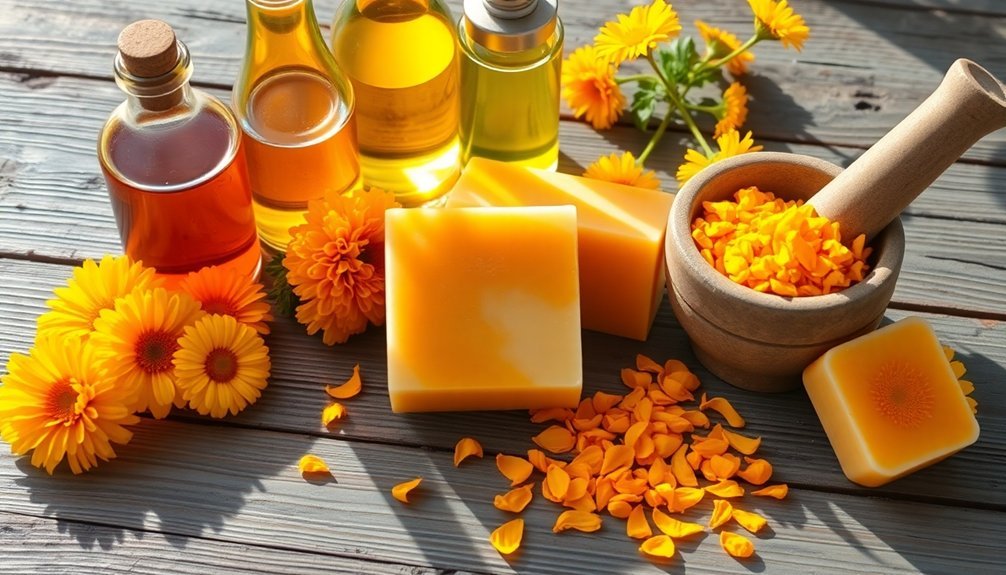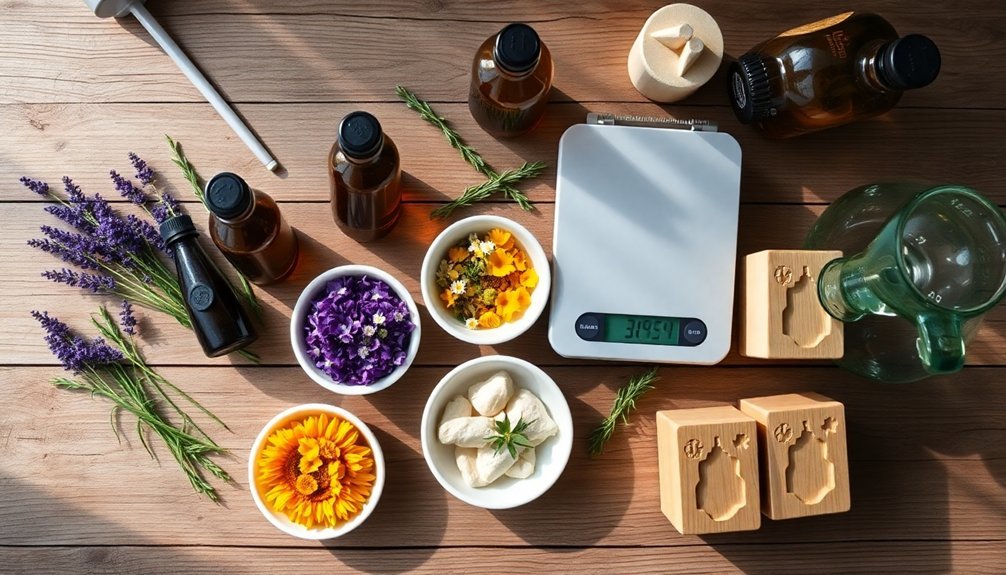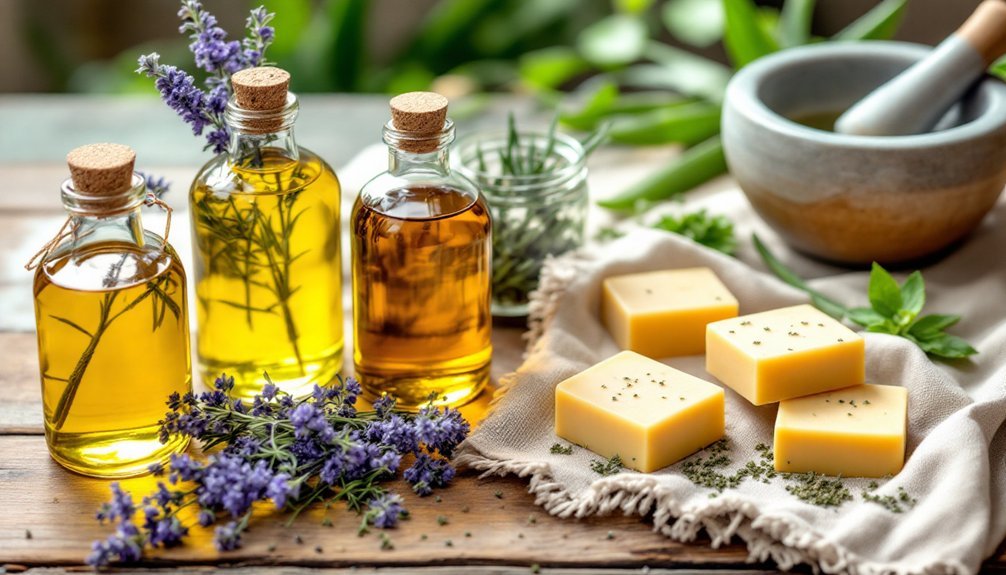For pure soap making, try calendula for its healing and anti-inflammatory properties, lavender for calming effects, and tea tree for antibacterial benefits. You'll get the best results by properly extracting their essence—either through oil infusion (1:4 herb-to-oil ratio) or using essential oils (staying within 0.5-5% of total soap weight). These botanicals add therapeutic value while enhancing your soap's visual appeal. The perfect formulation awaits as you master the art of plant extraction techniques.
Calendula: Nature's Golden Healer for Vibrant Soap

Radiance abounds when you incorporate calendula into your soap making repertoire. This golden herb infuses your soap bars with powerful anti-inflammatory properties that soothe irritated skin while promoting healing.
You'll find calendula particularly beneficial for addressing eczema and acne through its natural antibacterial qualities.
Create depth in your soap recipes by infusing oils with dried calendula petals, capturing both their therapeutic benefits and sunny hue. For visual appeal, sprinkle the vibrant petals directly into your mixture as natural exfoliants. They'll complement your other herbs and flowers perfectly.
Calendula's subtle floral notes blend harmoniously with complementary essential oils, enhancing the sensory experience of your handcrafted soaps.
Your skin will thank you for harnessing this botanical powerhouse in your artisanal creations.
Essential Extraction Methods for Botanical Soap Ingredients
While calendula offers amazing benefits in soap making, understanding how to extract plant properties properly forms the backbone of successful botanical soaps. You'll primarily use two essential extraction methods: steam distillation and solvent extraction.
| Extraction Method | Benefits | Considerations |
|---|---|---|
| Steam Distillation | Pure results | Requires 3lbs lavender for 15ml oil |
| Solvent Extraction | Works for delicate flowers | May leave trace solvents |
| Whole Plant Materials | Adds texture and color | Safer alternative to concentrated oils |
When incorporating these botanical soap ingredients, keep essential oils between 0.5%-5% of your total soap weight to prevent skin irritation. For those seeking creative infusion options without allergen concerns, whole plant materials offer a gentler alternative to concentrated oils while still delivering the therapeutic benefits you desire.
Formulating the Perfect Balance: Plant-to-Oil Ratios

Creating stunning botanical soaps depends largely on mastering the precise plant-to-oil ratios in your infusions. For dried herbs, start with a 1:4 ratio—one part plant material to four parts oil—to achieve effective extracts without risking rancidity.
Remember that different botanicals require unique approaches. You'll find that increasing plant material creates deeper color and stronger properties in your soap, while less material yields subtler results.
Your infusion process may take several weeks or even months to fully capture the botanical properties you're seeking.
To determine what works best for your specific soap formulation, experiment with small batches. Test various ratios and infusion times with different herbs and botanicals. This methodical approach will help you develop the perfect balance for consistently beautiful, potent soap creations.
Frequently Asked Questions
What Is the Best Plant to Make Soap?
There's no single "best" plant for soap. You'll find calendula soothes skin, chamomile calms inflammation, lavender provides fragrance, yarrow fights acne, and nettle offers vitamins. Choose based on your specific skin needs.
What Plant Has the Most Saponins?
The soapberry (Sapindus mukorossi) contains the highest saponin concentration at up to 30%. You'll also find significant amounts in horse chestnut (15-20%), and plants like quinoa and soybeans contain notable levels too.
What Herbs Are Good for Homemade Soap?
You'll find yarrow, chamomile, calendula, peppermint, and lavender excellent for homemade soap. They'll add antibacterial properties, soothing effects, natural exfoliation, vibrant colors, and appealing scents to your handcrafted bars.
Can I Use Extracts in Soap Making?
Yes, you can use extracts in soap making. They'll add therapeutic benefits, natural color, and appealing scents to your bars. Botanical extracts like calendula and chamomile are popular choices for their skin-soothing properties.
In Summary
You've now discovered three remarkable plant extracts that'll transform your soaps into therapeutic masterpieces. Whether you're infusing calendula's healing properties, mastering extraction techniques, or perfecting your plant-to-oil ratios, you're well-equipped for success. Don't be afraid to experiment—each batch offers new learning opportunities. Trust your instincts as you create beautiful, natural soaps that your skin and customers will thank you for.





Leave a Reply